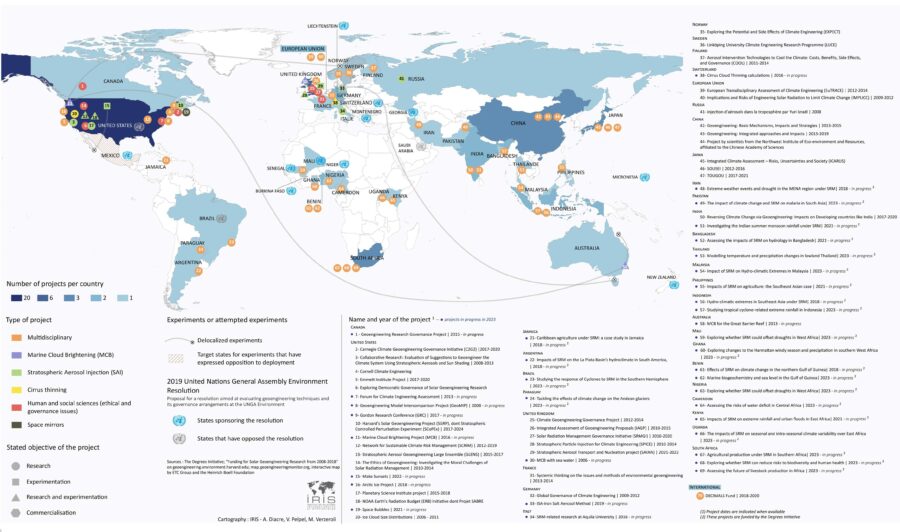Solar Geoengineering: Geostrategic and Defence issues
Techniques and their recent developments highlight the prospect of large-scale deployment of solar geoengineering over the coming decades. It therefore seems necessary to explore the security and strategic issues raised by these techniques, which this note sets out to do in four stages: a presentation of the techniques studied and the associated natural and human risks (I); an analysis of the geostrategic and defence issues they raise (II); four hypotheses, and three prospective scenarios narrating the deployment of solar geoengineering techniques by 2050, together with recommendations for the Ministry of Defence (IV).

In its 6th assessment report, the Intergovernmental Panel on Climate Change (IPCC) warns that it is highly likely that the temperature threshold of +1.5°C since pre-industrial times will be exceeded by the end of the century (IPCC, 2022, v.). The current trajectory of greenhouse gas (GHG) emissions, which should lead us to exceed this threshold before 2030, is already leading to extremely high levels of climate insecurity. This is borne out by the increasing number of meteorological and climate hazards which occurred around the globe in 2023, prompting UN Secretary-General Antonio Guterres to declare: “Climate collapse has begun” (Libération, 2023, 6 September).
The international community’s failure to implement effective and tangible mitigation policies has led to renewed interest in developing “solutions”, i.e. technological responses to climate change – such as climate geoengineering: a set of techniques designed to enable large-scale intervention in the climate system, with the aim of mitigating change and/or reducing its effects. Geoengineering can be divided into two broad categories, themselves comprising a variety of techniques and practices: on the one hand, the extraction of CO2 from the atmosphere (carbon dioxide removal, or CDR) and, on the other, modification of the radiation balance, often referred to as solar radiation management (SRM), which seeks to compensate for the increase in global average temperature by reducing the amount of radiation absorbed by the Earth (IPCC, 2022, 168).
While carbon extraction or capture has developed rapidly since the early 2000s, solar geoengineering techniques, which are less technologically advanced, have only seen their first field applications in recent years. Unlike less invasive techniques such as the use of white paint to increase the albedo of urban surfaces, some solar geoengineering projects intend to deploy technical and/or chemical devices in the clouds, in the atmosphere or in space. These include stratospheric aerosol injection (SAI), marine cloud brightening (MCB), cirrus cloud thinning (CCT) and space sunshades.
These techniques and their recent developments highlight the prospect of large-scale deployment of solar geoengineering over the coming decades. It therefore seems necessary to explore the security and strategic issues raised by these techniques, which this note sets out to do in four stages: a presentation of the techniques studied and the associated natural and human risks (I); an analysis of the geostrategic and defence issues they raise (II); four hypotheses, and three prospective scenarios narrating the deployment of solar geoengineering techniques by 2050, together with recommendations for the Ministry of Defence (IV).
Discover the map: main solar geoengineering projects worldwide






